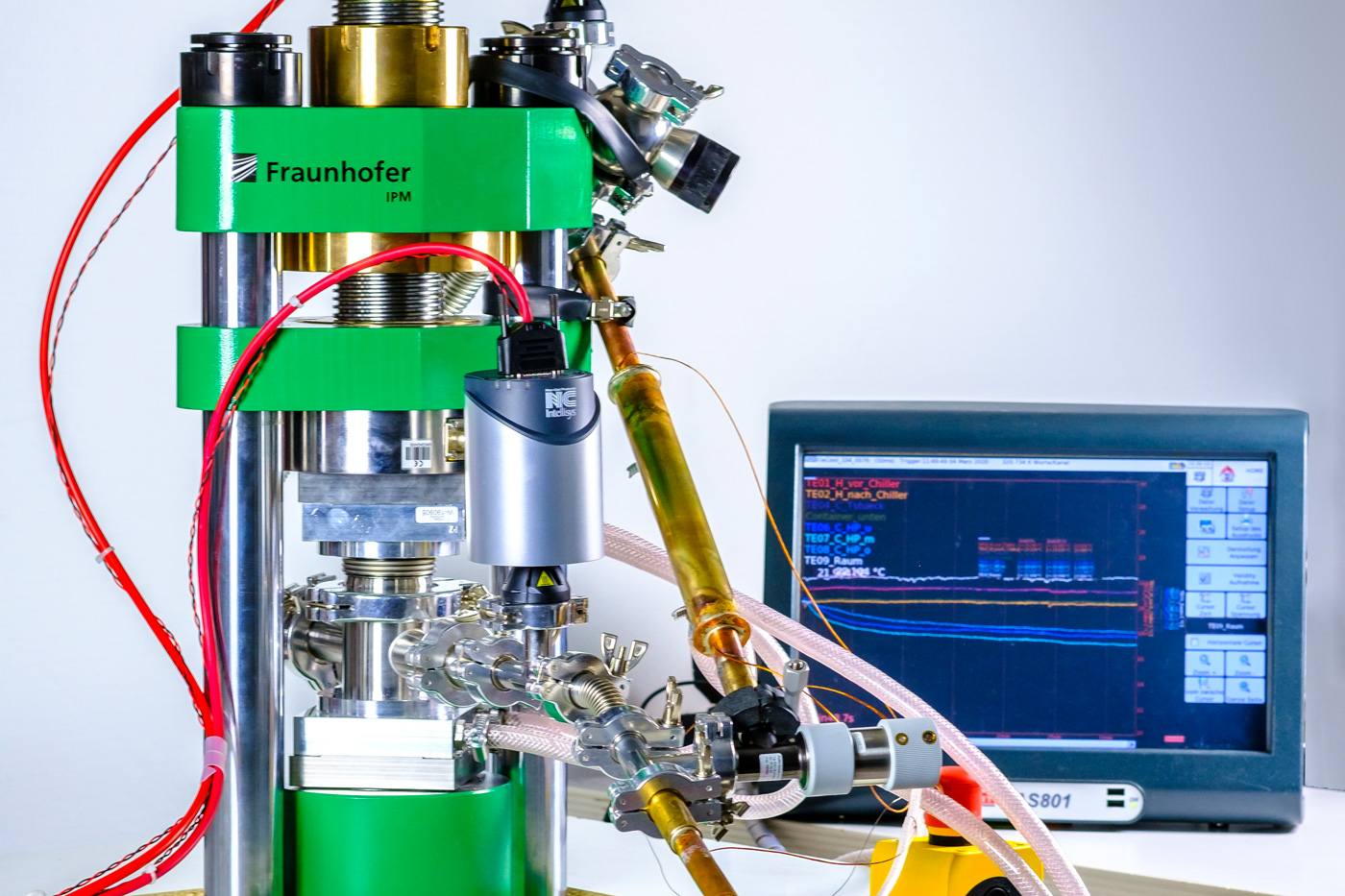Alternative cooling technology
A question of endurance: Fraunhofer IPM develops an elastocaloric cooling system with long-term stability
Caloric cooling systems have the potential to become the environmentally-friendly alternative to the widely used compressor-based cooling systems. The greatest challenge elastocaloric systems are facing is ensuring the long-term stability of the elastocaloric material while maintaining a high power density. A system presented by Fraunhofer IPM in the journal Communications Physics outperforms previous systems by several orders of magnitude when it comes to long-term stability – at the same time as achieving a high specific cooling power.

Today, the globally increasing demand for cooling technology is almost exclusively being met by compressor-based cooling systems. Most of these systems make use of environmentally harmful or flammable refrigerants. Caloric cooling systems are a promising, environmentally-friendly alternative. In elastocaloric systems, mechanical stress increases the material temperature and allows heat to be released into the environment. When removing the load, the material cools down to a temperature below the initial level – creating a cooling cycle.
Compression leads to reduced fatigue
Most elastocaloric systems work with tensile loads. This delivers a high surface-to-volume ratio and therefore an effective heat transfer. However, the material displays signs of fatigue caused by the tensile load comparatively fast. Exerting compressive instead of tensile loads on the material increases long-term stability – although the ratio between surface and volume is less favorable. This has a negative impact on the heat transfer.
Latent heat transfer for a highly efficient system
Fraunhofer IPM has now found the solution to this dilemma with an innovative patented approach: If the heat transfer occurs latently by evaporating and condensing a fluid such as in a heat pipe, then the heat transfer achieves values which are orders of magnitude higher than those reached with comparable systems with different heat transfer mechanisms. “This concept combines two key factors for success,” says Nora Bachmann, one of the system’s developers. “It reduces material fatigue caused by compression while improving the specific cooling power thanks to the efficiency of the heat transfer.” The demonstrator system achieves a long-term stability of 10 million cycles at a maximum specific cooling power of 6,270 W/kg. These values are far superior to those of existing systems. The results were published in the journal “Communications Physics”. The researchers’ next goal is to increase the temperature range of the cooling system. To achieve this, a multistage system is currently in development.